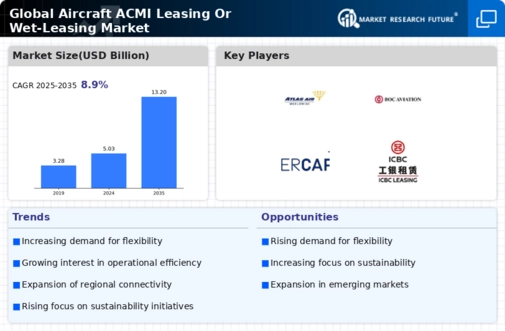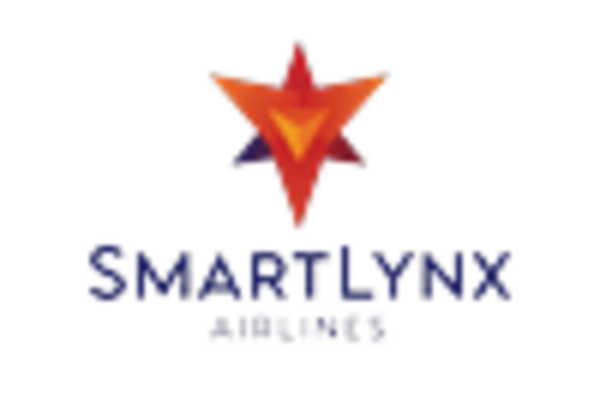Rising Air Travel Demand
The increasing demand for air travel is a primary driver of the Global Aircraft ACMI Leasing Or Wet-Leasing Market. As more passengers seek air travel options, airlines are compelled to expand their fleets rapidly. This trend is particularly evident in regions experiencing economic growth, where disposable income levels rise, leading to higher travel frequencies. According to industry reports, the air travel market is projected to grow at a compound annual growth rate (CAGR) of approximately 5% over the next decade. Consequently, airlines are turning to ACMI leasing as a flexible solution to meet this demand without the long-term commitment of purchasing new aircraft. This approach allows airlines to adjust their capacity in response to fluctuating market conditions, thereby enhancing operational efficiency and profitability.
Increased Competition Among Airlines
The competitive landscape of the airline industry is a significant driver of the Global Aircraft ACMI Leasing Or Wet-Leasing Market. As airlines vie for market share, they are compelled to adopt strategies that enhance their service offerings and operational capabilities. ACMI leasing provides airlines with the flexibility to scale operations quickly in response to market demands, allowing them to introduce new routes or increase capacity without the long-term commitment of purchasing aircraft. This agility is particularly beneficial in a market characterized by fluctuating demand and evolving consumer preferences. Furthermore, as new entrants emerge in the airline sector, established carriers are increasingly leveraging ACMI leasing to maintain their competitive edge. This trend suggests that the ACMI leasing market will continue to expand as airlines seek innovative ways to differentiate themselves in a crowded marketplace.
Technological Innovations in Aircraft
Technological advancements in aircraft design and operation are reshaping the Global Aircraft ACMI Leasing Or Wet-Leasing Market. Modern aircraft are increasingly equipped with fuel-efficient engines and advanced avionics, which enhance operational performance and reduce environmental impact. As airlines strive to modernize their fleets, ACMI leasing offers a practical solution to access the latest aircraft technology without the financial burden of ownership. The introduction of next-generation aircraft, such as the Airbus A320neo and Boeing 737 MAX, has prompted airlines to consider leasing as a means to remain competitive. These innovations not only improve fuel efficiency but also contribute to lower operational costs, making ACMI leasing an attractive option for airlines looking to upgrade their fleets while managing expenses.
Cost Efficiency and Financial Flexibility
Cost efficiency remains a crucial factor influencing the Global Aircraft ACMI Leasing Or Wet-Leasing Market. Airlines often face significant financial pressures, making it imperative to manage operational costs effectively. ACMI leasing offers a viable alternative to traditional aircraft ownership, allowing airlines to avoid substantial capital expenditures associated with purchasing new aircraft. By leasing, airlines can allocate resources more efficiently, focusing on core operations rather than asset management. Furthermore, ACMI agreements typically include maintenance and crew services, which can further reduce operational costs. This financial flexibility is particularly appealing in a competitive market where profit margins are often thin. As a result, many airlines are increasingly adopting ACMI leasing as a strategic approach to enhance their financial performance.
Regulatory Compliance and Safety Standards
The stringent regulatory environment surrounding aviation safety and operational standards significantly impacts the Global Aircraft ACMI Leasing Or Wet-Leasing Market. Airlines are required to adhere to various safety regulations, which can be resource-intensive. ACMI leasing provides a solution by allowing airlines to operate aircraft that are already compliant with these regulations, thus minimizing the burden of ensuring safety standards. Leasing companies often maintain their fleets to the highest safety standards, which can alleviate concerns for airlines regarding compliance. This aspect is particularly relevant as regulatory bodies continue to tighten safety requirements, making it essential for airlines to partner with reputable ACMI providers. Consequently, the demand for ACMI leasing services is likely to grow as airlines seek to ensure compliance while maintaining operational efficiency.

















Leave a Comment